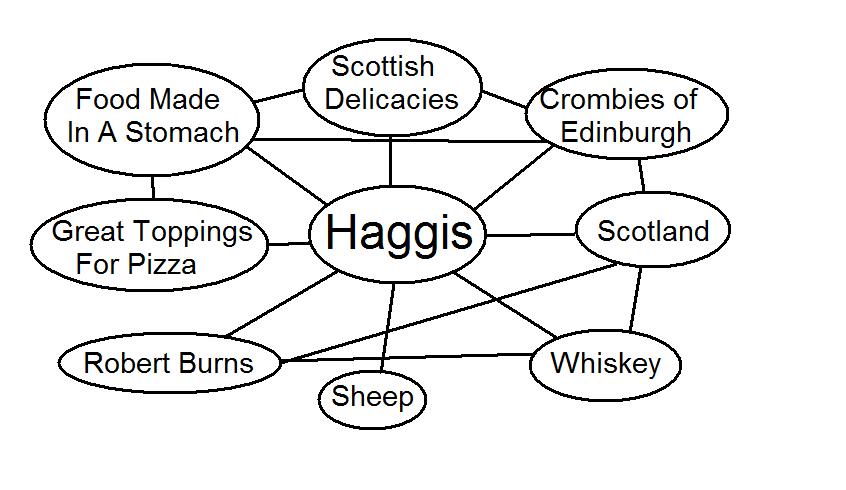One of the best parts of asking for research help at the library is the way that the librarians can link data. If I’m researching haggis, they can not only lead me to recipes and history of haggis, but will also know that overall Scottish history is pertinent and may suggest some sources I never would have thought of checking- like a biography of a Scottish chef. I am able to get access to sources that I wouldn’t have been able to find through a simple online search. Linked data, however, is changing this.
Linked data consists of any information which has been connected and integrated with other information within the semantic web. The semantic web is a way of building relationships between items that are often easily connected in the human mind but not in computers. By defining rules for connecting information, the semantic web allows for once disparate information to be brought together. For example, the human brain can easily connect the statements “Scotland is famous for haggis” with “The best haggis is from Crombies of Edinburgh” and with “Edinburgh is a major city in Scotland”. The semantic web within the human brain can see that these statements are all related. A computer, however, is not able to form a relationship between these statements without being given a set of rules and relationships between them. This is what linked data does: it creates the relationships and defines the properties of things that make up the semantic web.

Scotlands Places is an example of linked data. According to their website, they are “bringing authentic information and images together to help you discover places in Scotland”, but it is so much more than that. The website connects information from three large national databases: The Royal Commission on the Ancient and Historical Monuments of Scotland, The National Archives of Scotland and The National Library of Scotland. The database brings together a wide range of information including historical tax rolls, official reports, boundary information and hydrographic surveys. These are linked together by the geographic location, which can be searched through National Grid Reference, Decimal Degrees, Degrees, Minutes and Seconds, Easting/Northings or by searching selecting the location on a map by county. Once an item is selected, like the historic map of the Shire of Edinburgh, the user receives all information on the item including where it is housed, who it is associated with, details on the referencing, and will link you to the original source, which in this case is the National Museum of Scotland.

Another example that uses linked data in Scotland is the Archaeology Data Service. This database includes records of all archaeological surveys and reports from the United Kingdom. It includes integrated metadata search facility for information about archaeological sites and monuments, project archives, special collections that can be queried, and digitized library resources. For example, if I search Edinburgh again, I get site reports from a variety of locations. By clicking on Edinburgh, I can see a whole list of archaeological surveys in the area. Selecting Broomhall excavation, I can find reference to who conducted the dig, what was found (a medieval pendant and remnants of a defensive wall), and look at both modern and historical maps of the area. If the resource looks like something I would like to know more about, the page gives me all the necessary information to find the entire site report. This is actually the only downfall of this database- you cannot get the full site report online. Perhaps in the future, as open access becomes more prevalent, we will see an update on this.
With these two databases, scholars like archaeologists can conduct a large percentage of their research regarding potential sites or areas of historical significance online. It reduces the costs of having to travel to different libraries and archives by bringing all the data into a single free online source. What they need to do now is to link these two databases together so that the archaeological information is directly connected to the geographic and historical literature. Linking data within a semantic web is important because it allows for us to do research in a way that mimics the way that our own brain functions. If we want to look at the historical records for Edinburgh, its likely that these could be clarified by having a historic map of the same time period as well as access to archaeological information from the area. Linked data connects these, and makes life a wee bit easier.
Works Cited
Scotlands Places. http://www.scotlandsplaces.gov.uk/content/index.php?action=view&id=1
Linked Data. http://linkeddata.org/
W3 Schools. Semantic Web Tutorial. http://www.w3schools.com/semweb/default.asp
Archaeological Data Services. http://ads.ahds.ac.uk/